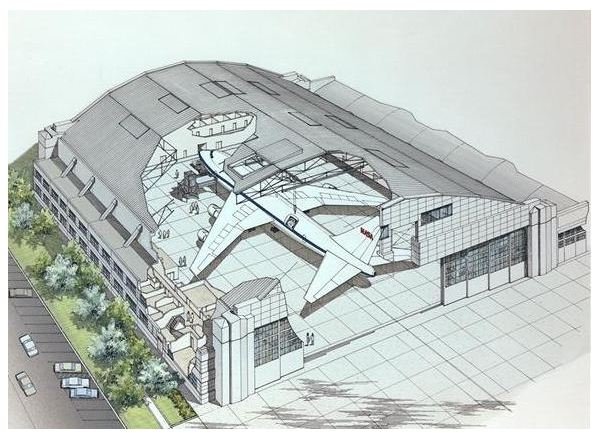Airplane Hangar Designs - Basic and Modern Layouts for Airplane Hangars
Aircraft Hangars - An Overview
An aircraft hangar is a building or structure that stores aircrafts and the place where an aircraft undergoes service, maintenance or amendments. In short, aircraft hangars are “fancy garages” meant for airplanes. Their design varies from a plain shady structure that protects and maintains the airplanes to avant-garde ones with a controlled environment and mechanical facilities complete with robots. Each hangar is so designed that it lessens the maintenance duration so that the flying creatures can carry on their work efficiently.
Aircraft hangars are mainly sectioned into three distinct areas - the hangar bay, the maintenance/repair area, and the administration/operations area. The hanger bay area offers basic services such as detaching engines, changing wheels, etc., whereas the maintenance area is where major overhauling or repair of aircrafts takes place. The design of both of these areas is estimated by mapping documents for the module configuration. Moreover, hangar configurations are made flexible enough to accommodate all of the existing as well as anticipated aircrafts.
Main Types of Aircraft Hangar Designs
Aircraft hangars can be broadly classified into three main types:
- Maintenance & repair hangars
- Storage hangars
- T-hangars
Maintenance hangars are the largest of all types, offering full-fledged services such as removing wheels, changing engines, airframes and engine maintenance. Storage hangars house propellers, small jet aircrafts and various other smaller aircrafts. Storage hangars can be further sectioned into commercial hangars (that meet fire codes and carry out wide-ranging maintenance services) and non-commercial hangars. Lastly, T-hangars are also meant to accommodate small aircrafts. Shaped like a “T,” these hangars have interlocked adjacent parallel rows. They are smaller in size as compared to the earlier two types and are usually a metal-shed with non-existent facilities.
Image Credit: Wikimedia Commons/NASA
More Hangar Styles
Apart from the above mentioned types, hangars can also be classified into the following:
- Shade hangars
- Military hangars
Shade hangars are devoid of exterior walls and are economically built as compared to maintenance or storage hangars; whereas military hangars incorporate excellent fire safety, fortification, and hardening in addition to having the best maintenance facilities. Military hangars serve the purpose of national security and thus are valued and expensive.
Also, based on style, hangars can be classified into a number of types as follows:
A simple hangar is a steel-framed building with a grand and imposing entrance and has a length up to 60-65m. Simple hangars are meant for smaller aircrafts and have different types of portal designs to suit the needed requirements. The tied portal hangar, another type of hangar, can be stretched up to 85m, whereas multi-span and propped portals can be extended to any span. A segmental tied hangar spans up to more than 200m, whereas glove hangars are economical for their span with their doors customized on the basis of a specific aircraft while the size of the front-half of the hangar is decreased.
Hangars made out of spine truss also prove effective for short hangars; however the efficiency of truss and its stiffness decreases with the increase in span. Cantilever hangars are perfect and in demand because of potential expansion. These hangars can be as long as a kilometer with a devoted workshop zone in the backyard, which also serves as a counter-weight. Butterfly hangars are similar to cantilever hangars but they require an apron on both sides.
Peculiar Hangar Designs
In addition to the standard structures mentioned above, experiments have been made with other unique designs like bell-shaped curved roofs that are almost invisible from the sky. Other designs such as cable supported structures, heavy timber, cantilevered-butterfly frames, and space-frames are also created according to convenience and requirement. Space frame hangars are designed as light weight tubular-steel struts that are inter-connected at nodes, which form lattices and can be traditionally shaped or modified depending on the shape of the plane.
In summary, no structural system hangar is ideal. The choice of hangar depends on the features of the aircraft as well as the economies of scale. However, one thing is for sure – with the advent of new technology, innovative aircrafts are being made which will certainly necessitate the need for customized hangars.
References
An Introduction to the Valuation of Aircraft Hangars, https://www.entrepreneur.com/tradejournals/article/176131504.html
REIDSteel Aircraft Hangars, https://www.aircraft-hangars.com/
